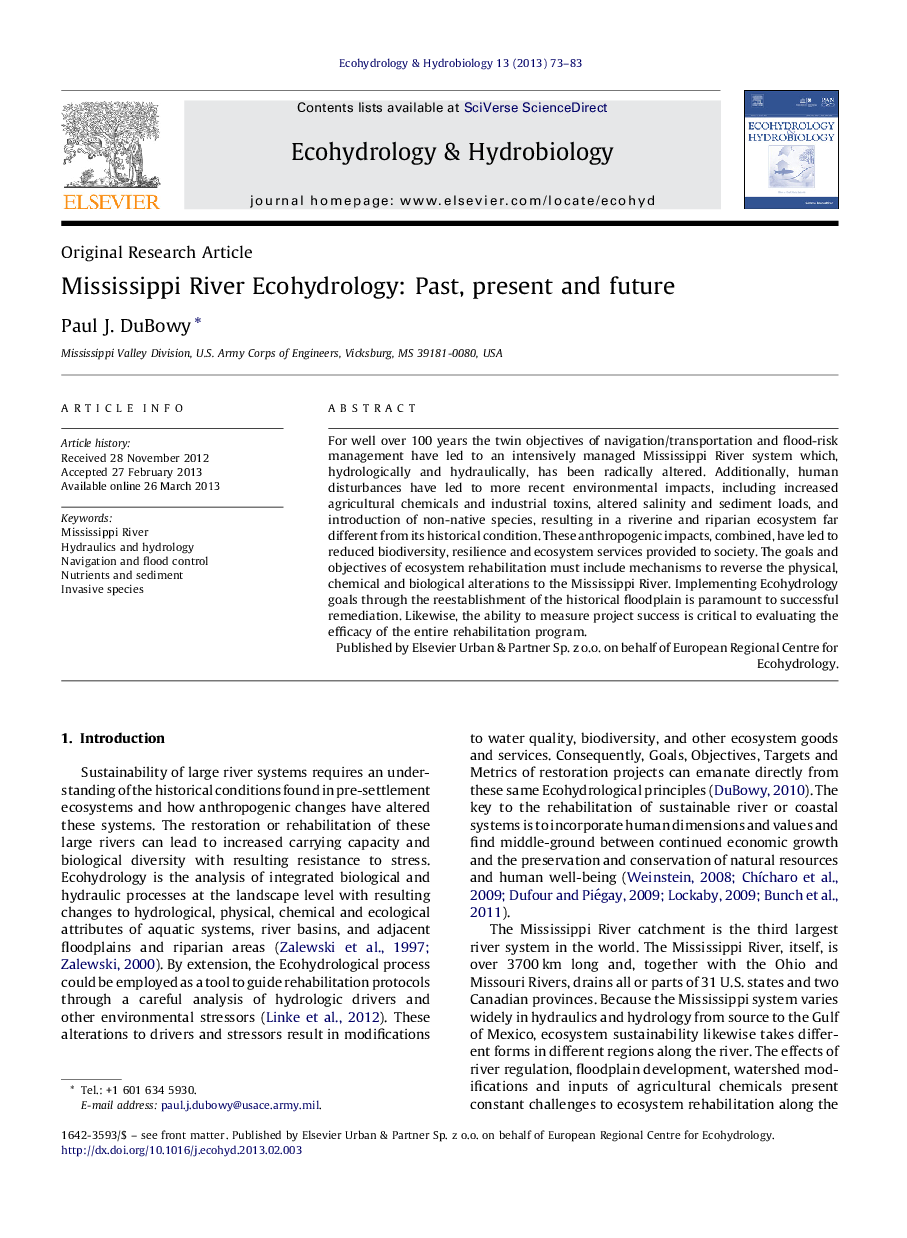| Article ID | Journal | Published Year | Pages | File Type |
|---|---|---|---|---|
| 4388032 | Ecohydrology & Hydrobiology | 2013 | 11 Pages |
Abstract
For well over 100 years the twin objectives of navigation/transportation and flood-risk management have led to an intensively managed Mississippi River system which, hydrologically and hydraulically, has been radically altered. Additionally, human disturbances have led to more recent environmental impacts, including increased agricultural chemicals and industrial toxins, altered salinity and sediment loads, and introduction of non-native species, resulting in a riverine and riparian ecosystem far different from its historical condition. These anthropogenic impacts, combined, have led to reduced biodiversity, resilience and ecosystem services provided to society. The goals and objectives of ecosystem rehabilitation must include mechanisms to reverse the physical, chemical and biological alterations to the Mississippi River. Implementing Ecohydrology goals through the reestablishment of the historical floodplain is paramount to successful remediation. Likewise, the ability to measure project success is critical to evaluating the efficacy of the entire rehabilitation program.
Keywords
Related Topics
Life Sciences
Agricultural and Biological Sciences
Agricultural and Biological Sciences (General)
Authors
Paul J. DuBowy,
